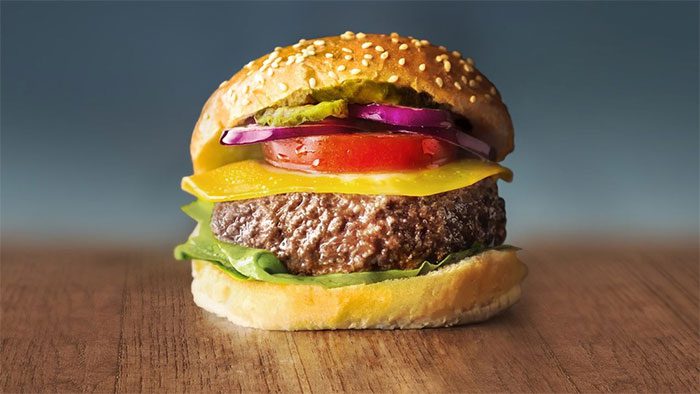Animal farming and the consumption of billions of animals each year contribute to the climate crisis. However, scientists have developed a type of meat that does not require slaughtering.
“Cultured meat is meat grown directly from animal cells. These products are neither vegan nor plant-based. They are still meat but are produced without the need for animals,” said Uma Valeti, CEO of Upside Foods.
“The process of producing cultured meat is similar to brewing beer, but instead of cultivating yeast or bacteria, we cultivate animal cells,” Valeti explained to CNN via email.
Scientists begin the cultivation process by taking a small sample of cells from animals such as cows or chickens and then identifying the cells that can replicate.
“We place these cells in an ideal environment while providing them with essential nutrients to reproduce naturally. Essentially, we can recreate the conditions that exist inside an animal’s body,” he stated.
From laboratory research, cultured meat, also known as slaughter-free meat, is now transitioning to production at several commercial facilities.
In addition to reducing animal slaughter, this type of meat could also help slow climate change by minimizing greenhouse gas emissions such as carbon dioxide and methane, as the food system is responsible for about a quarter of global greenhouse gas emissions, most of which come from livestock agriculture.
Continuously Improving Technology
As of now, Singapore and the United States are the only two countries that have approved cell-cultured meat for consumers. This industry has only been developing for about 10 years, so it may take several more years before this meat is available on the U.S. market and could take up to 20 years to replace a significant portion or all of traditional meat, said David Kaplan, a biomedical engineering professor at Tufts University.
According to Kaplan, the technology for producing cultured meat is based on human tissue culture techniques in laboratories.
Scientists take cell samples from animal tissue through biopsies, isolating cells from eggs, traditional meat, or from cell banks. The biopsy method “is similar to human biopsy. In principle, the animal will be fine afterward,” Kaplan said.

Cultured beef burger from Mosa Meat – a food technology company based in the Netherlands. (Photo: CNN/Redwan Farooq).
The second step is to identify the nutrients – vitamins, minerals, and amino acids – to provide to the cells.
“The isolated cells are immersed in a nutrient solution contained within a large stainless steel vessel under a certain pressure, creating an environment that allows the cells to grow efficiently and safely,” said Josh Tetrick, CEO of Eat Just, a company specializing in plant-based egg alternatives.
Tetrick added that the cell sample would take about two weeks to grow to the desired size. Subsequently, they are converted into finished products, which could be chicken breast or beef patties and steaks.
“The exciting part is that (we) can adjust the texture of the meat,” said Kimbal Musk, chef and executive chairman of Kitchen Restaurant Group.
“Alternative meats can be too spongy or too tough. Honestly, even traditional chicken can be like that. But with this technology, (we) can adjust it,” he added.
Musk shared that the first time he cooked this meat was about two years ago. By the morning of June 2 at the Life Itself conference, he tried the dish again. “It’s much better. That means the technology is continuously improving,” he assessed.
Amy Chen, CEO of Upside Foods, also stated: “This industry is taking a step closer to commercialization.”
A Solution to Multiple Problems?
“Whether for the benefit of animals, the climate, biodiversity, or food safety, (there are) many important reasons to change the way we eat meat,” Tetrick said.
With just one or a few animals being sampled for cells, the world would not need to allocate hundreds of millions of square meters of land to grow food for livestock.
“If everything is done well, we only need one animal in the first biopsy,” Kaplan said. “(We) can ‘immortalize’ those cells and help them proliferate forever.”
Tetrick also noted that a single cell could produce hundreds of billions of kilograms of meat and “there is no limit.”

Beef tartare made from cultured meat from Mosa Meat. (Photo: CNN/Redwan Farooq).
A 2022 report from the Intergovernmental Panel on Climate Change (IPCC) evaluated cultured meat as an emerging food technology that could significantly reduce global emissions from food production by decreasing the consumption of “water, land, and nutrients.”
On this matter, Kaplan noted that the question of whether cultured meat consumes less water remains controversial and cannot be definitively answered, “because cellular agriculture requires a lot of water.”
However, Tetrick observed that reducing land and ocean use in agriculture could help conserve biodiversity.
Moreover, cultured meat producers do not want to use many or want to eliminate antibiotics, which means cultured meat also poses less risk to consumer health, Kaplan stated.
Cultured meat also does not require synthetic growth hormones – a contentious issue regarding potential impacts on human health, puberty, and cancer.
Furthermore, the IPCC noted that as cultured meat is developed, humans will need to interact less with animals and their habitats, thereby reducing the risk of zoonotic virus transmission.
According to the United Nations, the two leading causes of zoonotic diseases like COVID-19 are the increasing demand for animal protein and unsustainable agricultural intensification.
However, the accessibility of this type of meat to consumers remains uncertain.
This product was only recently approved by the FDA. In March 2019, the FDA announced it would work with the U.S. Department of Agriculture to oversee products using animal cell culture technology to ensure that products released to the market are “safe, unadulterated, and truthfully labeled.”
“Regulatory agencies need to consider more about the nomenclature, as this product is still meat. Suppose someone is allergic to meat or fish; they should know this is real meat. Therefore, (this product) will be called meat, but we need to consider more about the accompanying terminology,” Valeti said.
Meanwhile, the Academy of Nutrition and Dietetics emphasized “the need for a better understanding of the long-term health effects of cultured meats and poultry. There is also very little information about the nutritional density of these products,” they stated.
However, if cultured meat passes important standards, “that would be a remarkable achievement when people can eat the meat they love without having to slaughter animals,” Valeti told CNN in an interview.


















































